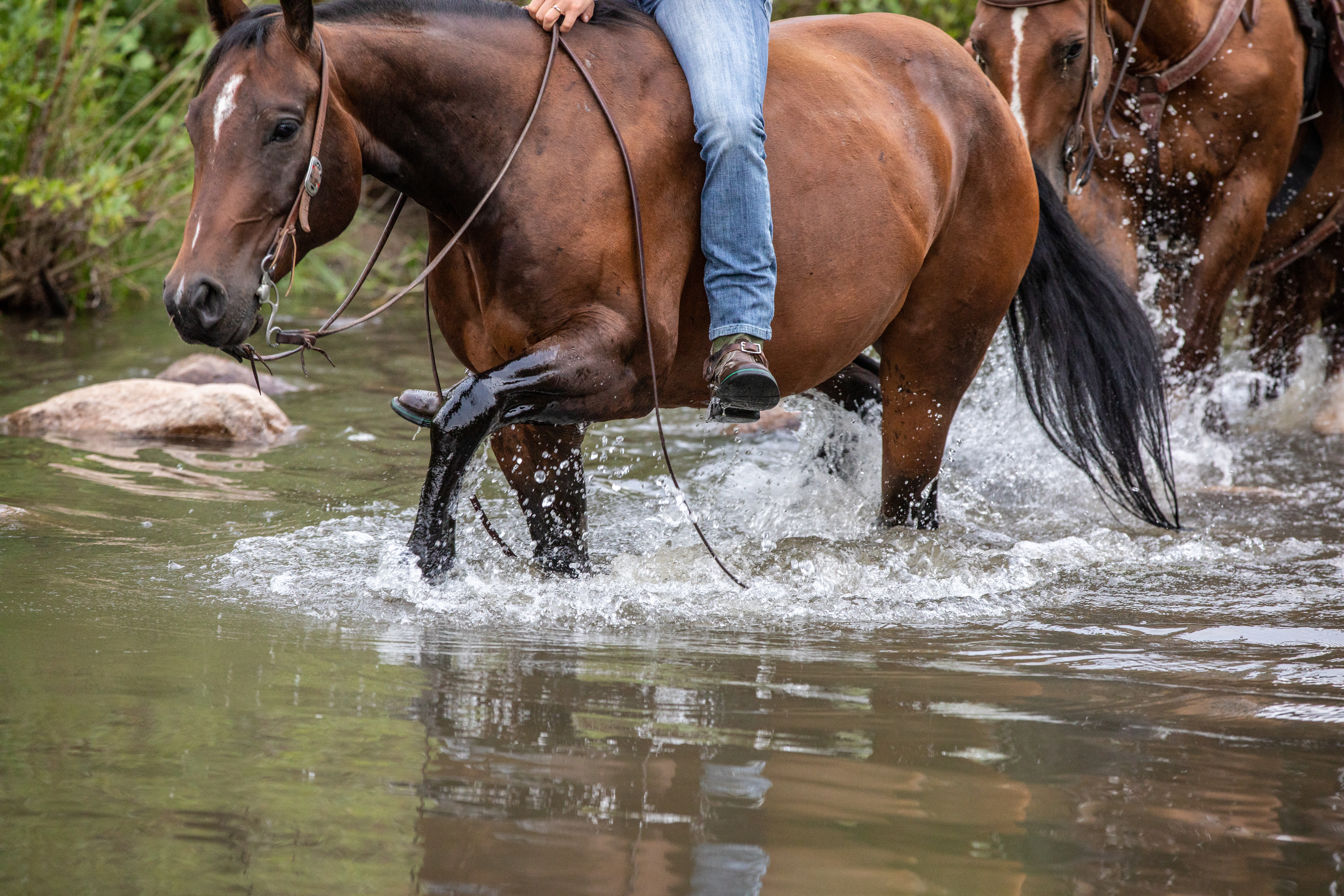You’ve gone a new direction on the trail and come to the creek at a place you’ve never crossed before. Is it safe to forge ahead into the water with your horse? Ideally, your trail companions will be familiar enough with local topography to know what sort of footing lies under the water. Lacking that information, however, you can make an educated water-crossing choice by closely observing several clues:

- Survey the land leading up to the water’s edge. Swampy muck often precedes a dangerous bog beneath the water surface, and a steep or rocky drop-off into the stream usually indicates that unreliable footing lies ahead.
- Look for areas where other animals have entered. Deer, for example, have a knack for finding firm, gentle slopes into the water. But beware of following cattle tracks; cattle wade in wherever they happen to be, churning stream banks into mire as they do. Ride the banks to look for a narrow, firm path down into the water, and avoid wide expanses of mud covered with shallow water, no matter how many hoofprints they may hold.
- Listen to your horse. Extreme reluctance to enter the stream on the part of a usually water-savvy horse is to be heeded. Don’t under estimate equine intuition.
If, even after careful deliberations, your crossing choice puts you on unstable footing midstream, you’ll have to make a split-second decision as to your next move. Most horses want to lunge forward through boggy footing; if you are more than halfway to the opposite bank, you may be wise to let your mount do so before he sinks to his knees. Slippery shale and boulders, on the other hand, are usually best avoided; go back carefully the way you can, and try another crossing. In either case, dismounting will free your horse to take whatever actions he must to get out of his fix. You’ll be wet for the rest of the ride, but will remain out of harm’s way as your horse scrambles and lunges.
Don’t miss out! With the free weekly EQUUS newsletter, you’ll get the latest horse health information delivered right to your in basket! If you’re not already receiving the EQUUS newsletter, click here to sign up. It’s *free*!








